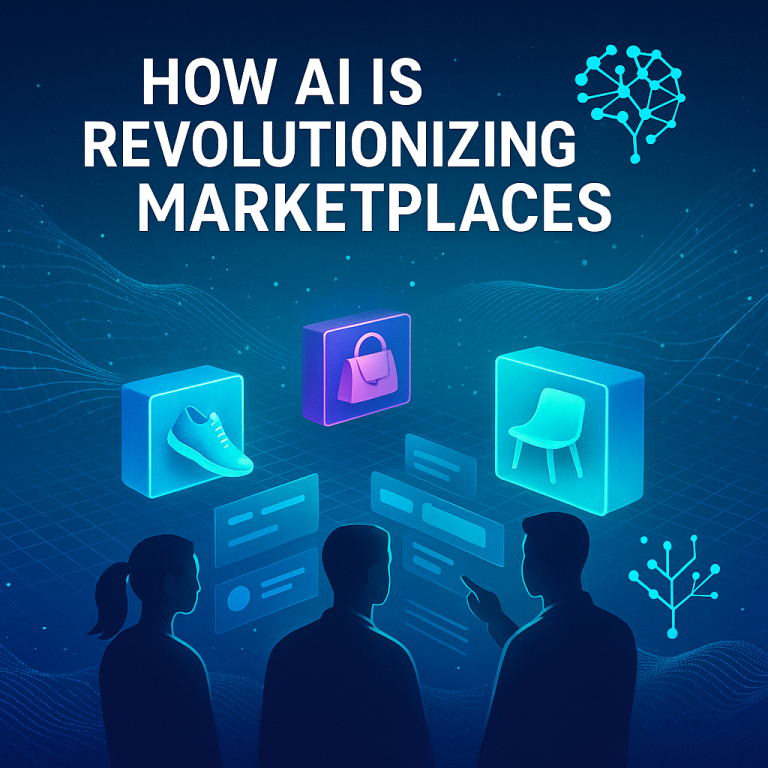Crypto UX 2025: What Makes Platforms Truly User-Friendly?
Crypto UX 2025: What Makes Platforms Truly User-Friendly?
What is UX and why does it matter in Web3?
UX (User Experience) defines how users interact with a product—from the first click to the final transaction. In the crypto world, it determines whether users feel confident, lost, or overwhelmed. In 2025, UX is no longer a secondary concern. It’s the key to trust, adoption, and retention.
Why UX Still Matters

Crypto platforms have made significant technical progress, but UX has lagged behind. As MetaMask UX audits show, great tech without great UX drives users away. Even Vitalik Buterin called UX “the final frontier for crypto adoption.”
User Pain Points in 2025
- Onboarding challenges: Concerns about seed phrases remain. Solutions such as Magic.link enable social/email integration. login.
- Error fear: Mistakes like sending funds to wrong addresses, or approving risky contracts, are still common.
- Terminology overload: Concepts like gas, slippage, or L2s overwhelm newcomers. Clear language matters.
Trends in Crypto UX/UI
As financial technology continues to evolve, the emergence of a bank-like user interface (UI) has become a focal point for enhancing user experience. Inspired by applications such as Revolut and Robinhood, these interfaces aim to create a seamless navigation experience that simplifies financial management. Looking ahead to 2025, it is anticipated that advancements in AI will further refine these interfaces, providing users with intuitive tools that promote engagement and efficiency.
Incorporating features such as automation, these platforms will offer smart hints, gas predictions, and autofill capabilities, thereby streamlining everyday transactions. Users will benefit from a more personalized experience, as the integration of AI allows for tailored recommendations based on individual preferences and behaviors. This automation not only enhances convenience but also empowers users to make informed financial decisions.
Furthermore, the introduction of personalized dashboards will cater to varying levels of user expertise, distinguishing between beginner and advanced modes, akin to the functionality displayed in the Rainbow Wallet application. This approach facilitates a more inclusive environment for users, enabling them to engage with financial tools that align with their proficiency levels.
As the landscape of financial applications continues to shift, embracing these innovations will be pivotal for achieving a truly user-centric financial ecosystem.
Security vs. Convenience
As the crypto industry continues to evolve, the adoption of biometric logins such as Face ID and fingerprints is increasingly replacing traditional passwords, thereby enhancing the security of digital wallets. This shift towards biometric authentication aligns with the broader trends of decentralization and security within the realm of cryptocurrencies like Ethereum and Bitcoin. Consumers are now more inclined to use crypto with the assurance that their digital assets are safeguarded through advanced biometric technologies. By 2025, we anticipate a further refinement in user experience as wallet integration becomes seamless, allowing users to interact with various blockchains, including Solana and BNB Chain, through dapps that employ smart contracts for more secure transactions.
Complementing the biometric advancements is the emergence of social recovery mechanisms in wallets such as Argent X, which leverage trusted contacts to regain access to accounts. This feature not only enhances user confidence in managing their digital assets but also exemplifies a practical use case for externally owned accounts. As we look ahead, the integration of stablecoins is expected to facilitate smoother transactions across different chains, substantially reducing transaction fees and enhancing scalability. With an ever-expanding base of active crypto users, the need for personalized solutions becomes paramount. By employing intuitive interfaces and adhering to fundamental design principles, developers can create an easier to use environment for individuals new to the crypto experience.
In addition to secure logins and social recovery, the importance of in-app education cannot be overstated. Tools such as simulations, interactive onboarding processes, and fake test transfers serve to demystify the complexities of cryptocurrency transactions. This educational aspect is vital in shaping user behavior and fostering a more informed user base. As the crypto industry matures, the focus on abstraction and personalization will drive the creation of wallets that cater to diverse user needs. By simplifying the onboarding process and enhancing compatibility with various stablecoins and assets, the industry stands poised for significant growth. The convergence of these elements will facilitate a more robust and accessible crypto landscape by 2025, ensuring that both novice and experienced users can navigate the digital economy with confidence.
Multi-Chain UX

In the rapidly evolving landscape of decentralized finance (DeFi), the ability to auto-detect networks such as ETH, Arbitrum, and Polygon is paramount for enhancing user experience within dapps. As we look ahead to 2025, it is essential to consider how these technologies will influence currency transactions and facilitate crypto moves across various platforms. Notably, the cross-chain gas fee comparison has emerged as a critical factor for users seeking to minimize costs while engaging with multiple blockchain environments. This development underscores the need for faster and cheaper transaction mechanisms, particularly in a landscape where stablecoin adoption is becoming increasingly prevalent.
Furthermore, innovations like account abstraction serve to streamline the user experience by providing frictionless onboarding processes. The introduction of platforms such as Uniswap X exemplifies this trend, as it conceals complex logic behind a simple swap button, thereby enhancing user engagement and accessibility. This approach minimizes barriers to entry, allowing a broader audience to participate in the cryptocurrency markets without the need for extensive technical knowledge. The implementation of EIP-7702 further supports this endeavor by optimizing EOAs (Externally Owned Accounts) and ensuring that wallets remain secure while simplifying the overall transaction experience.
As we continue to explore these advancements, it is crucial to remain cognizant of the annual big ideas lists that highlight the transformative potential of these technologies. This episode is part 1 of a two-part series dedicated to covering our annual big ideas, emphasizing how innovations will continue to shape the financial tools available to users. Ultimately, while security remains a priority, the ongoing development of these platforms will further diminish the fragment of complexity that often creates friction in user interactions.
Web3 Social Experience
-
-
- NFT avatars and collectibles serve as substitutes for conventional static profile icons.
-
- Enhanced onboarding through gamification: implementation of POAPs, badges, and experience point systems.
-
Decentralized Autonomous Organization (DAO) voting integrated within wallets, allowing for one-click proposal submissions.
Regulatory Influence

In the rapidly evolving landscape of decentralized applications (dapp) and blockchain technology, the introduction of standardized labels such as “High-Risk Token” is becoming increasingly essential. As we look ahead to 2025, these labels will provide users with critical information, facilitating informed decision-making while navigating the complexities of the digital asset ecosystem. The integration of embedded tax tools within app stores will further enhance platform usage by automating compliance processes, thereby simplifying financial reporting for users engaged in activities involving cryptocurrencies like Bitcoin and Ethereum.
Moreover, the implementation of zero-knowledge identity proofs will significantly streamline the Know Your Customer (KYC) processes. This innovative approach ensures that users can verify their identities without compromising their personal information, thereby fostering a sense of security and trust within the ecosystem. Co-founder Vitalik Buterin has been a vocal advocate for the development of these technologies, emphasizing their role in creating a more inclusive and user-friendly environment for both newcomers and seasoned participants in the realm of digital assets.
As we explore the intersection of fun and games with financial technologies, it becomes evident that the convergence of these elements will play a pivotal role in shaping user experiences. By covering the trends and themes that emerge from these advancements, we can better understand the future trajectory of decentralized platforms and their potential to revolutionize the way individuals interact with financial systems.
Audience Focus
In the evolving landscape of digital platforms, new users often encounter unfamiliar interfaces that can significantly influence their experiences. By employing UX analogies, such as likening a digital wallet to an email account and a token to a ticket, developers can facilitate a more intuitive understanding of their services. This method not only aids in comprehension but also enhances user confidence, allowing them to navigate the digital ecosystem with greater ease. As we look ahead to 2025, the integration of artificial intelligence in user experience design will likely play a pivotal role in streamlining these analogies, ensuring that even the most technologically challenged individuals can grasp the functionalities available to them.
For builders of digital platforms, micro-interactions represent a critical component of user engagement and conversion rates. These subtle yet impactful elements serve to reinforce user actions, providing clear feedback and enhancing the overall experience. When designed thoughtfully, micro-interactions can significantly reduce friction during critical conversion points, thereby increasing the likelihood of user retention. As we advance, leveraging AI to personalize these interactions will become imperative, aligning user experiences with their specific needs and preferences.
For investors, understanding how UX drives retention, total value locked (TVL), and overall engagement is essential for making informed decisions. A well-executed user experience not only fosters loyalty among users but also contributes to long-term engagement metrics. As the market evolves, the emphasis on UX will continue to rise, underscoring its integral role in sustaining user interest and maximizing investment returns. The future will undoubtedly favor platforms that prioritize user-centric designs, ultimately shaping a more engaging digital landscape.

FAQ: Crypto UX in 2025 – Key Questions Answered
- 1. Why is UX still a problem in crypto?
- Many platforms prioritize functionality over usability. Key management, transaction errors, and unclear design push users away.
- 2. What’s the biggest UX improvement needed for mass adoption?
- Recovery without complexity: biometrics, social login, and zero-seed wallets like Argent.
- 3. Will multi-chain wallets finally become seamless?
- Yes. Features like network auto-detect, unified gas fee views, and abstracted bridges are becoming standard.
- 4. How can DeFi platforms stop users from losing money?
- Warnings before risky approvals, simulations (like Revoke.cash), and test modes can help.
- 5. Can crypto UX ever match traditional finance apps?
- Yes. Wallets like Rainbow use fiat-style design. Security + simplicity = winning combo.
- 6. What role will AI play in crypto UX?
- AI will auto-fill transactions, detect fraud, and offer real-time user education.
- 7. Will regulation help or hurt crypto UX?
- It depends. Smooth KYC (e.g., ZK proofs) can help. Clunky forms will hurt adoption.
- 8. Which projects are leading in UX right now?
- Wallets: Phantom, Rainbow
Exchanges: Coinbase, Kraken
DeFi: Uniswap X, Aave
Final Thoughts
Crypto UX in 2025 is evolving fast. Platforms that prioritize clarity, accessibility, and emotional trust will dominate. Web3 needs to feel less like a puzzle and more like a product anyone can use. As we move toward 2025, the emphasis on user experience (UX) in the cryptocurrency and blockchain space will become increasingly crucial. With the rapid development of decentralized finance (DeFi), non-fungible tokens (NFTs), and other Web3 innovations, users will demand interfaces that not only facilitate transactions but also foster a sense of security and ease.
To achieve this, developers and designers must focus on intuitive onboarding experiences. Simplifying wallet setups, transaction processes, and educational resources will be key in demystifying blockchain technology for the average user. This includes employing familiar design patterns and language that resonate with users who may not have a technical background.
Moreover, emotional trust will play a significant role in user retention. As scams and hacks have plagued the crypto space, platforms that can effectively communicate safety measures and demonstrate transparency will build stronger relationships with their users. Implementing features like real-time alerts, comprehensive FAQs, and responsive customer support will enhance this trust.
Interoperability between platforms will also be essential. Users should be able to seamlessly navigate between different services without the frustration of having to re-learn interfaces or manage multiple wallets. A unified approach to user experience can help create a more cohesive ecosystem, reducing friction and encouraging broader adoption.
Finally, community engagement will be a vital aspect of successful crypto UX. Platforms that actively involve their users in decision-making processes, feature feedback loops, and foster a sense of belonging will thrive. This not only enhances user loyalty but also creates a more vibrant and dynamic environment for innovation.
In summary, as we look ahead to 2025, the future of crypto UX will hinge on the balance between advanced technology and user-centric design. By prioritizing clarity, accessibility, and trust, we can shape a web3 landscape that feels welcoming and empowering, paving the way for mass adoption and a more inclusive financial future.
🚀 Connect With Us
📬 Stay Updated on Web3 Careers
Join our newsletter to get weekly tips, job openings, and tools for Web3 professionals.
💸 Start Earning with CryptoNav
Explore top crypto platforms, claim welcome bonuses, and support our work through affiliate links:






